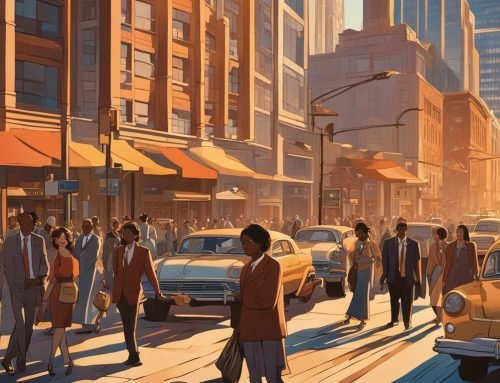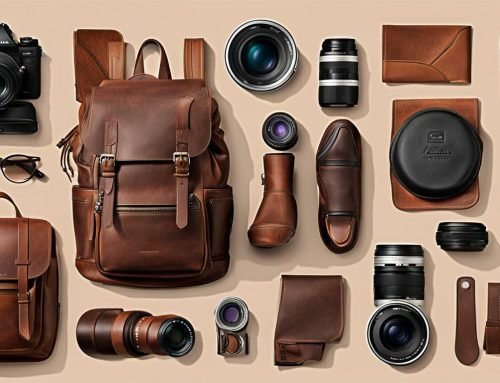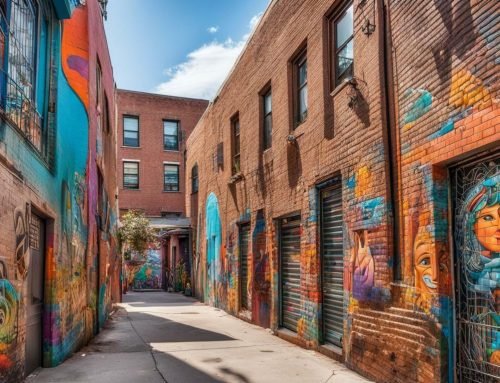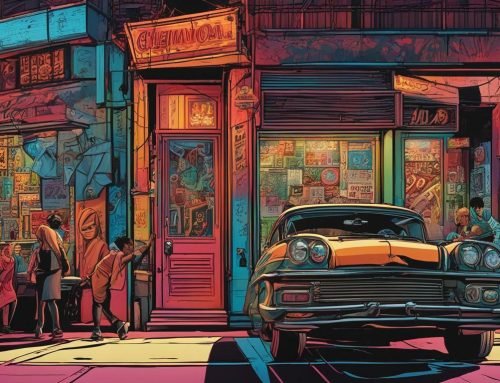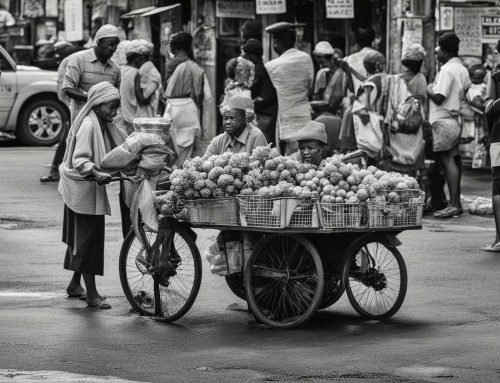Urban landscape photography has become increasingly popular among photographers, as it provides endless opportunities for capturing the beauty and diversity of cityscapes. However, mastering the art of urban landscape photography requires more than just pointing and shooting. It requires a keen eye for detail, an understanding of composition and lighting, and the ability to tell a story through your images. In this guide, we will provide you with tips, inspiration, and ideas for taking your urban landscape photography to the next level.
Key Takeaways:
- Urban landscape photography requires more than just pointing and shooting
- A keen eye for detail, composition, and lighting are essential
- This guide will provide tips, inspiration, and ideas for capturing stunning cityscapes
Exploring Urban Landscape Photography Techniques
Urban landscape photography techniques are essential for capturing stunning photos of cities. Whether you’re exploring the bustling streets of New York or taking in the historic architecture of Paris, applying these techniques can enhance your photographs and showcase the beauty of the urban landscape.
Long Exposure
Long exposure is a popular technique in urban landscape photography that involves using a slow shutter speed to capture motion blur. This technique is especially effective at night and can create stunning photos of cityscapes. To achieve this effect, it’s important to use a tripod to keep the camera steady and experiment with different shutter speeds to achieve the desired effect.
HDR
HDR, or High Dynamic Range, is a technique that involves taking several photos at different exposures and blending them together to create an image with a wider range of colors and lighting. This technique is especially useful in urban landscape photography where there are often extreme contrasts between bright lights and dark shadows. HDR can help to balance these contrasts and create a more visually appealing image.
Street Photography
Street photography is a popular technique in urban landscape photography that involves capturing candid moments of people in public spaces. This technique can bring a sense of life and vibrancy to your cityscape photos and provide a unique perspective on the urban landscape. When practicing street photography, it’s important to be respectful of people’s privacy and avoid taking photos without their consent.
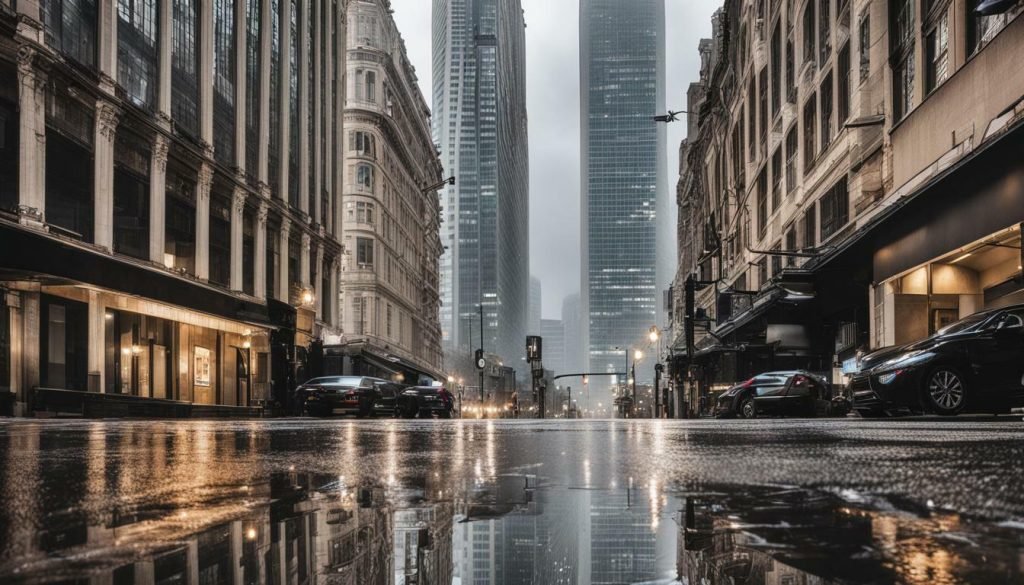
Experimenting with these techniques can help to elevate your urban landscape photography to the next level. Don’t be afraid to try new things and push the boundaries of your creativity.
Composition Tips for Urban Landscape Photography
Composition is a crucial aspect of urban landscape photography. It can significantly affect the impact and visual appeal of your cityscape photos. By using different composition techniques, you can create images that convey a sense of depth, scale, and mood.
One of the most effective ways to improve your composition skills is to experiment with framing. Framing involves placing elements within the frame to create a focal point and draw the viewer’s eye into the image. You can use buildings, bridges, or even streetlights to create a frame around your subject.
Another essential composition technique for urban landscape photography is leading lines. Leading lines are lines within your image that draw the viewer’s eye towards the subject. They can be anything from a road or sidewalk to a row of buildings. Try to use leading lines to create a sense of movement or direction in your photos.
The rule of thirds is another popular composition technique that can help you create striking urban landscape photos. This technique involves dividing the frame into thirds both horizontally and vertically and placing your subject at one of the points where the lines intersect.
Finally, it’s important to balance the elements within your frame. Balance includes distributing visual weight evenly throughout the image. You can use buildings, people, or other objects to create a sense of balance and harmony in your photos.
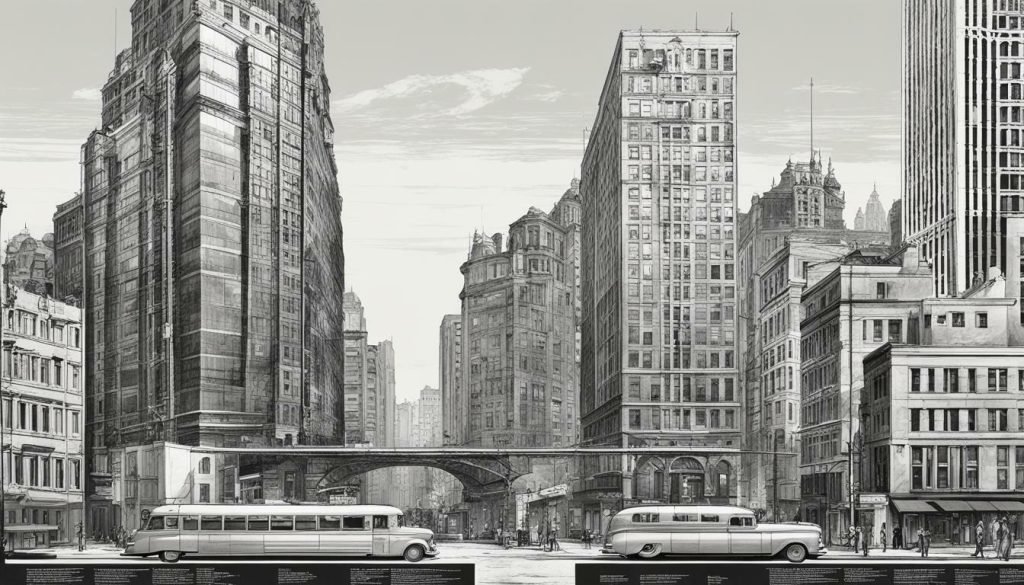
Remember that there are no hard and fast rules when it comes to composition in urban landscape photography. Experiment with different techniques and find what works best for you. With practice, you’ll be able to create stunning cityscape photos that capture the beauty and character of the urban landscape.
Lighting Techniques for Urban Landscape Photography
Lighting is a crucial element in urban landscape photography, as it can greatly affect the mood and atmosphere of your photos. Understanding how to capture the cityscape in different lighting conditions can result in stunning and unique images. Here are some tips for lighting in urban landscape photography:
The Golden Hour
The golden hour, which occurs during the first hour after sunrise and the last hour before sunset, provides a warm and soft light that can enhance the beauty of urban landscapes. During this time, the sun is at a low angle, casting long shadows and creating a sense of depth in your photos. To make the most of the golden hour, plan your shoot ahead of time and arrive at your location early to set up your equipment.
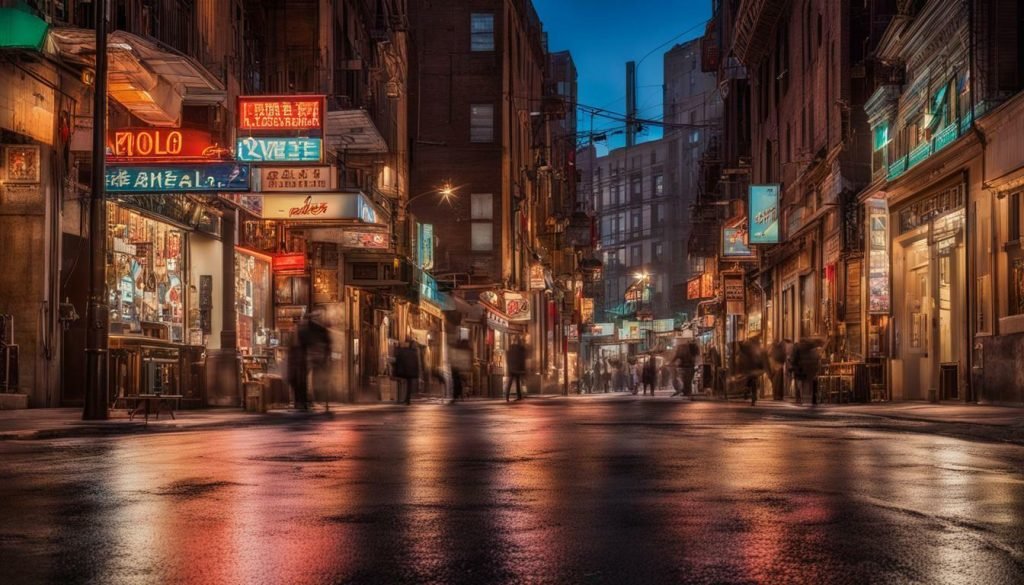
The Blue Hour
The blue hour, which occurs before sunrise and after sunset, provides a soft blue light that can add a calm and peaceful atmosphere to your urban landscape photos. This time also allows you to capture the city lights that provide contrast to the blue sky. To capture the blue hour, use a tripod to prevent camera shake and experiment with different shutter speeds to create desired effects.
Night-Time Shots
Night-time shots can provide a captivating and dramatic feel to your urban landscape photos. To capture sharp and clear night-time shots, use a tripod and a remote shutter release to avoid camera shake. Experiment with different exposure times to create desired effects and consider using a fast lens to allow more light into your camera.
By understanding how to work with different lighting conditions, you can create stunning urban landscape photos that capture the beauty and essence of the city. Experiment with different techniques and lighting conditions to find your unique style in urban landscape photography.
Essential Gear for Urban Landscape Photography
Urban landscape photography requires some specific gear to ensure the best possible results. Here are some essential items to consider:
| Item | Description |
|---|---|
| Camera | A high-quality camera with a large sensor and interchangeable lenses is ideal for urban landscape photography. Mirrorless and DSLR cameras are both good options. |
| Lenses | Wide-angle lenses are great for capturing the grandeur of urban landscapes. Zoom lenses are also useful for versatility. |
| Tripod | A sturdy tripod is essential for sharp, stable shots, especially during low light conditions. Consider a lightweight and compact option for portability. |
| Filters | Polarizing and neutral density filters can improve contrast, reduce glare, and allow for longer exposures. Consider carrying several filter sizes to accommodate different lenses. |
While these items are essential, there are also additional accessories that can enhance your photography experience, such as a remote shutter release, a camera bag, and spare batteries and memory cards.
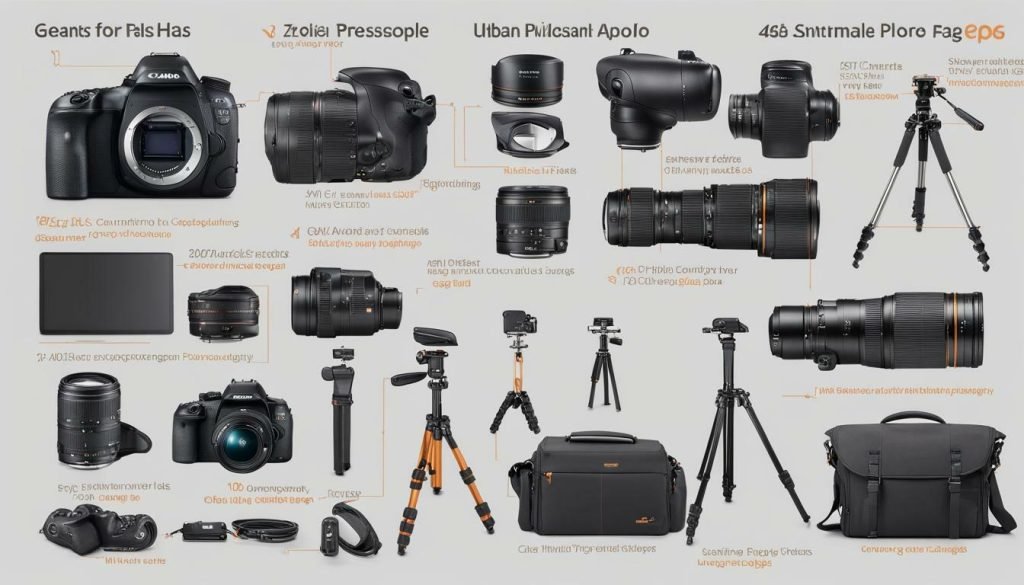
Investing in quality gear is important, but remember that skill and creativity play a significant role in capturing striking urban landscapes. Take time to experiment with different techniques and equipment to find what works best for your style of photography.
Finding Inspiration for Urban Landscape Photography
Urban landscapes offer a wealth of inspiration for photographers seeking to capture the beauty of the city. Whether you’re a seasoned pro or just starting out, finding inspiration is key to creating stunning urban landscape photos. Here are some tips for getting inspired:
- Observe the city: Take a walk around your city and observe the people, buildings, and surroundings. Pay attention to the details and think about how you can incorporate them into your photos.
- Research locations: Look up popular or lesser-known locations in your city that offer great photo opportunities. Consider visiting these locations at different times of day to capture changing light and mood.
- Seek unique perspectives: Experiment with different angles, heights, and distances to capture urban landscapes from unique perspectives. Look for reflections, shadows, and other elements that add interest and depth to your photos.
In addition to these tips, seeking inspiration from renowned urban landscape photographers can also be helpful. Check out the work of photographers like Joel Meyerowitz, Vivian Maier, and Michael Kenna for inspiration.
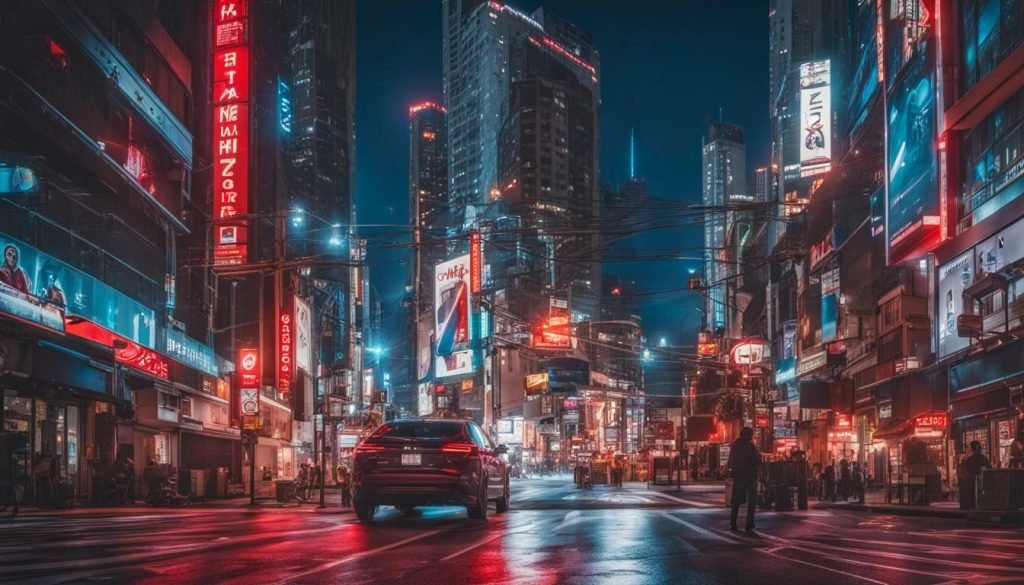
“Photography is a way of feeling, of touching, of loving. What you have caught on film is captured forever… It remembers little things long after you have forgotten everything.” – Aaron Siskind
Remember that urban landscape photography is all about capturing the essence of the city in a unique and creative way. Stay curious, experiment with different techniques and perspectives, and most importantly, have fun!
Planning and Executing Urban Landscape Photography Shoots
In order to capture stunning urban landscape photos, it’s important to plan and execute your photo shoots carefully. Here are some tips and ideas to get you started:
- Scout your locations: Take the time to explore your city and find unique locations for your photos. Look for interesting architecture, alleys, parks, and landmarks that can serve as backdrops for your shots. Make sure to visit your locations at different times of day and under different lighting conditions to get a sense of the best time to shoot.
- Consider the weather: Be aware of the weather forecast and choose the right time to shoot. Cloudy and overcast days can provide ideal diffuse lighting for urban landscapes, while clear blue skies can make for beautiful contrast. Rain or snow can also add unique elements and textures to your photos.
- Pay attention to timing: Sunset and sunrise are magical times for urban landscape photography, often referred to as “golden hour” and “blue hour”. These periods provide warm and cool tones to your photos that can create a spectacular mood. Additionally, night time photography can give you opportunities to capture the city lighting and the nightlife in a whole different way.
Once you have your locations and timing sorted, the next step is to think creatively and come up with unique ideas for your photo shoots.
- Go off the beaten path: Don’t be afraid to explore less popular areas or lesser-known spots in your city. Sometimes the best shots can be found in the most unexpected places.
- Create a theme: Choose a specific theme or concept for your shoot, such as reflections, shadows, or architecture. This will help you narrow your focus and create a cohesive collection of photos.
- Experiment with perspective: Play around with different angles, heights, and distances to find interesting perspectives that can make your photos stand out. Consider using a drone for aerial shots or a wide-angle lens for dramatic landscape photos.
With these tips and ideas in mind, you’re ready to plan and execute your own urban landscape photography shoots. Remember, always be creative, challenging yourself to take new shots from different angles and perspectives. Keep practicing and exploring, and you’ll soon master the art of urban landscape photography.
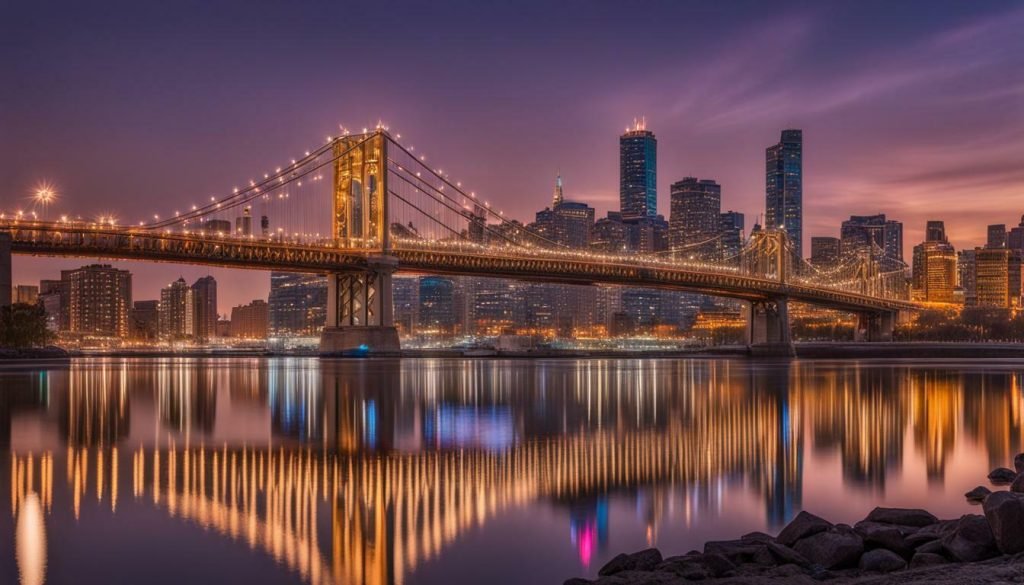
Editing and Post-Processing Urban Landscape Photos
Editing and post-processing play a crucial role in achieving breathtaking urban landscape photos. With the right techniques, you can enhance the colors, contrast and sharpness of your images, making them stand out.
The first step in the post-processing phase is to import your photos onto your computer. Then, you can start selecting and editing your images. Lightroom and Photoshop are two of the most popular software options for editing urban landscape photos.
Lightroom offers a range of editing tools such as exposure, contrast, highlights, and shadows, making it an ideal choice for beginners. Photoshop, on the other hand, offers more advanced features such as layers, masking, and blending modes, suitable for more experienced photographers.
One important aspect of editing urban landscape photos is achieving a natural look. Avoid over-saturation and extreme settings, as they can make your image look unrealistic. Instead, aim for a balanced and harmonious image.
Another technique to enhance your urban landscape photos is to use filters. Polarizing filters can remove unwanted reflections and glare, while neutral density filters can help slow down your shutter speed for long-exposure shots.
Finally, don’t forget to crop your images to improve composition and remove distracting elements. Experiment with different crops, and find the one that best showcases the beauty of your urban landscape photo.
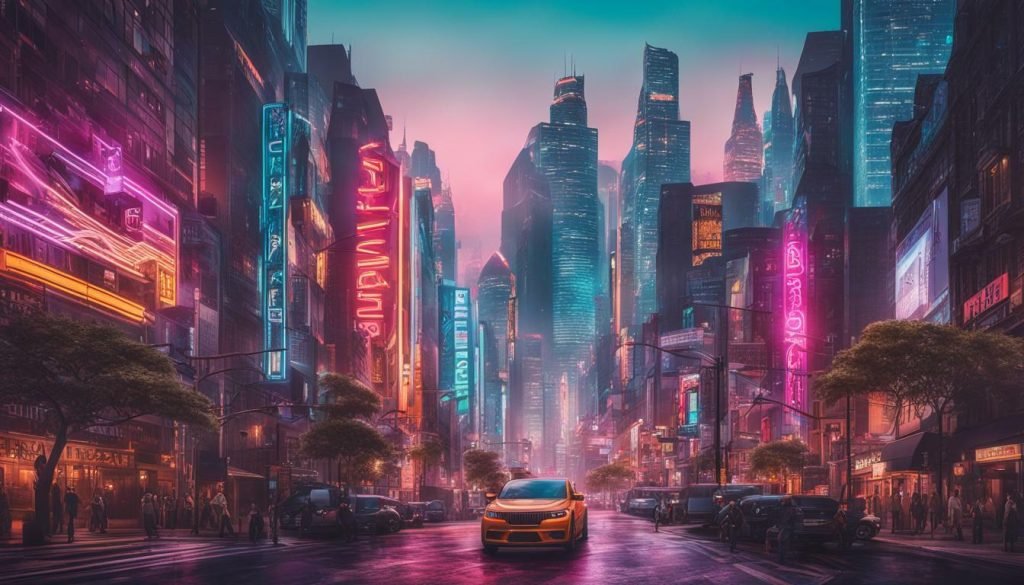
“In photography, there is a reality so subtle that it becomes more real than reality.” – Alfred Stieglitz
Sharing and Showcasing Urban Landscape Photography
Urban photography is a dynamic and growing genre, and showcasing your work is an excellent way to share your passion and reach a wider audience.
Social media is a powerful tool for photographers, allowing you to share your urban landscape photos in a visually engaging way. Consider creating galleries and albums on platforms like Instagram and Flickr, and use relevant hashtags to increase exposure to your work. Utilizing Pinterest and Facebook groups is also a great way to connect with other urban photography enthusiasts and showcase your work.
Creating a personal website or blog is another effective method for showcasing your urban landscape photos. A website allows you to present your work in a professional manner, with the ability to customize the design and layout to your liking. You can also use your website to share your creative process and insights into your urban photography journey.
Participating in exhibitions and entering competitions can also be an effective way of getting your work out there and gaining recognition. Check local art events and photography exhibitions, where you can showcase your work and gain exposure.
Remember, sharing and showcasing your urban landscape photos is an exciting way to engage with a wider community and receive feedback on your work. With these tips, you will be able to build an online presence and establish yourself as an accomplished urban photographer.
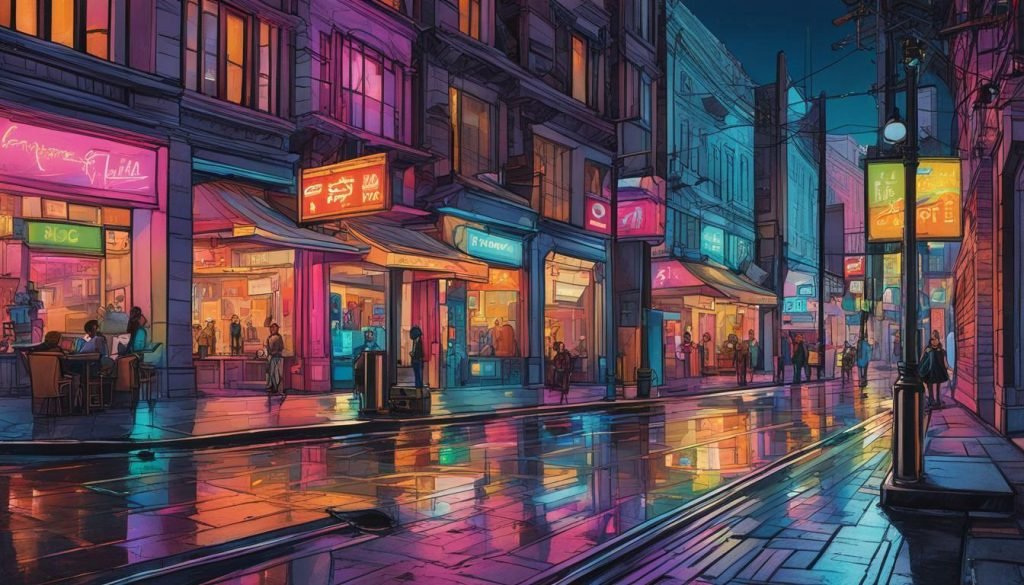
Conclusion
Urban landscape photography is a captivating genre that enables photographers to showcase the beauty of the city. By mastering techniques, composition, and lighting, photographers can capture stunning cityscapes that reflect their unique perspectives.
Essential gear, scouting locations, and planning shoots are crucial in achieving high-quality urban landscape photos. Editing and post-processing are equally important to enhance the colors, contrast, and sharpness of images.
Sharing and showcasing urban landscape photography can be done through various platforms, including social media, websites, and exhibitions. Building a strong online presence and joining communities can help photographers attract more viewers to their work.
As with any other genre, practice and experimentation are crucial in mastering urban landscape photography. By exploring their own cityscapes with newfound knowledge and inspiration, photographers can capture breathtaking urban landscapes that tell unique stories.
FAQ
Q: What is urban landscape photography?
A: Urban landscape photography is a genre of photography that focuses on capturing the beauty, architecture, and essence of urban environments. It involves capturing cityscapes, buildings, streets, and other urban elements in a visually striking and compelling way.
Q: Why is mastering urban landscape photography techniques important?
A: Mastering urban landscape photography techniques is important because it allows photographers to capture the beauty of the city in its best light. It enables them to create visually stunning images that showcase the unique characteristics of urban environments.
Q: What are some common techniques used in urban landscape photography?
A: Common techniques used in urban landscape photography include long exposure, HDR (High Dynamic Range), and street photography. These techniques enhance the visual impact of urban landscape photos by allowing photographers to capture movement, details, and dynamic range in their images.
Q: How can composition enhance urban landscape photography?
A: Composition plays a crucial role in urban landscape photography. By using techniques such as framing, leading lines, the rule of thirds, and balancing elements within the frame, photographers can create visually stunning and engaging images that draw the viewer’s attention and evoke emotion.
Q: What role does lighting play in urban landscape photography?
A: Lighting plays a significant role in urban landscape photography as it sets the mood and atmosphere of the cityscape. Capturing the golden hour, blue hour, and night-time shots can add a dramatic and captivating element to urban landscape photos.
Q: What gear is essential for urban landscape photography?
A: Essential gear for urban landscape photography includes a camera with manual settings, a wide-angle lens, a tripod for stability, and filters to control light and enhance specific elements in the images.
Q: Where can I find inspiration for urban landscape photography?
A: Inspiration for urban landscape photography can be found by observing the city, researching locations, seeking unique perspectives, and exploring the work of renowned urban landscape photographers.
Q: How can I plan and execute successful urban landscape photography shoots?
A: Planning and executing successful urban landscape photography shoots involve scouting locations, considering weather conditions, timing the shoot, and thinking creatively to capture unique perspectives and themes within the cityscape.
Q: What role does editing and post-processing play in urban landscape photography?
A: Editing and post-processing are important steps in urban landscape photography as they allow photographers to enhance colors, adjust contrast, and sharpen images to achieve their desired effects. Different software options and techniques are available for this purpose.
Q: How can I share and showcase my urban landscape photography?
A: Sharing and showcasing urban landscape photography can be done through social media platforms, websites, and exhibitions. Building an online presence, participating in photography communities, and entering competitions can help attract viewers to your work.

